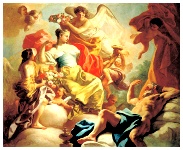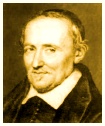
 The Goddess of Dawn Auroras (commonly referred to as the "Northern Lights" in the northern hemisphere) occur in the upper atmosphere at both poles. They are known as "aurora borealis" in the north, and "aurora australis" in the south. A 17th Century scientist in France named Pierre Gassendi (Also: Gassend, 1592-1655) applied the name "aurora" to the Northern Lights, naming the fantastic light displays after Aurora - the Goddess of Dawn in Roman mythology.
Aurora rose from her bed every morning leaving her aged husband Titone shielding his eyes from the morning light which flowed from her torch. As she travelled across the sky in her horse drawn chariot, the clouds of night rolled away and the horizon lightened. A group of maidens scattered flowers, announcing the beginning of a bright new day.
Click pictures for more information and credits. Library: Northern Lights Environment / Atmosphere, Arctic Links: Northern Lights, Arctic Northern Lights Slide Show Arctic Maps & Weather Reports |

|
DICTIONARY: Just "double-click" any unlinked word on this page for the definition from Merriam-Webster's Student Electronic Dictionary at Word Central. |

|
ARCTIC LIBRARY & GLOSSARY: Check this section for an index of the rest of the things you really need to know about the Arctic. |

|
ARCTIC MAPS & WEATHER REPORTS: Maps of the Northwest Passage, explorers' routes, iceberg sources, Nunavut, the Arctic by treeline, temperature... |

|
ARCTIC LINKS: Even more information! Links to sites related to the Arctic and "Iceberg: the Story of the Throps and the Squallhoots". |

|
GUIDE TO ARCTIC SUNRISE & SUNSET: How much sunlight or darkness is there in the Arctic on each day of the year? |
to is the property of their respective owners, and Athropolis is not responsible for their content.
